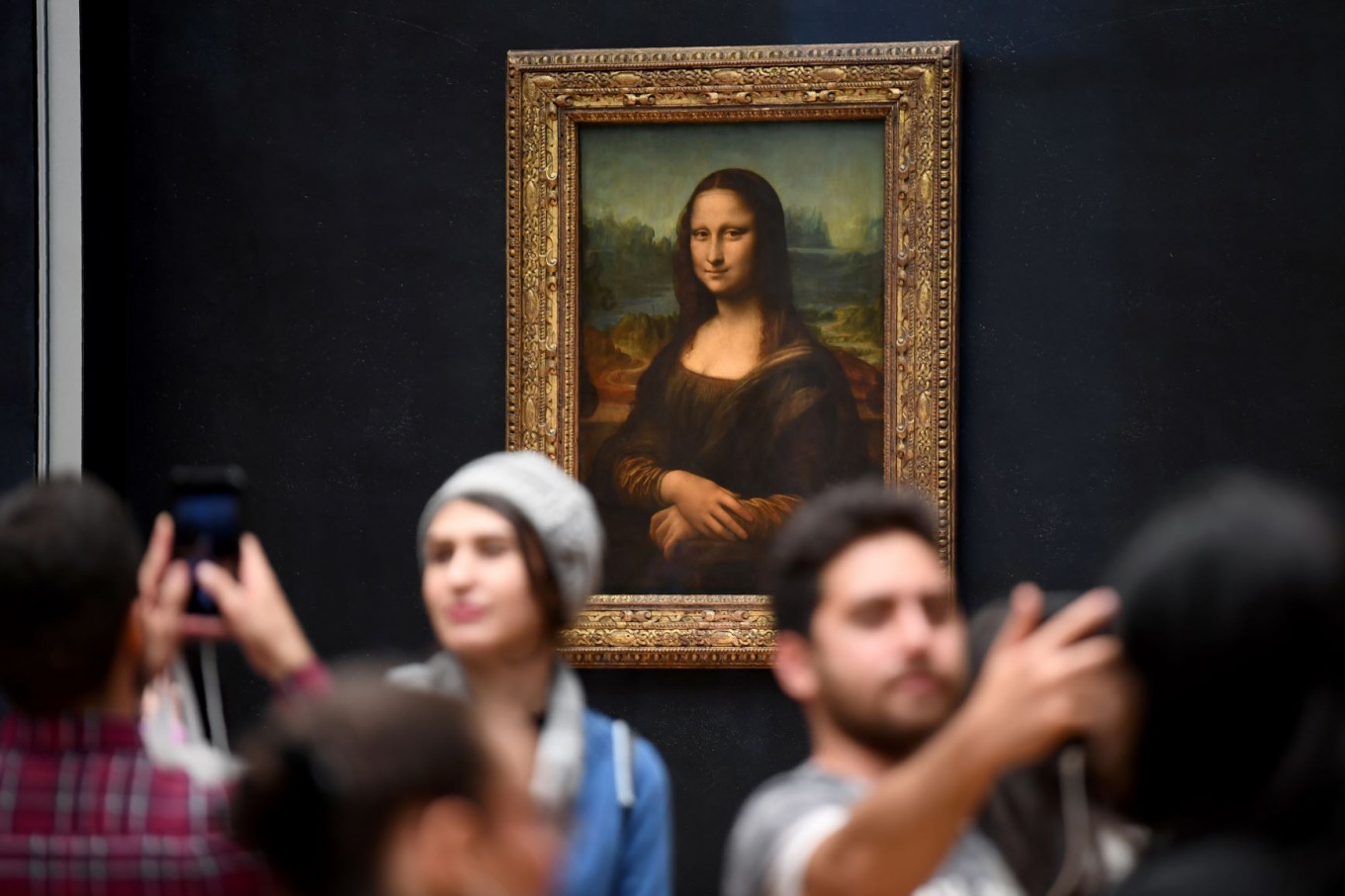Popular Reads
Top Results
Can't find what you're looking for?
View all search resultsPopular Reads
Top Results
Can't find what you're looking for?
View all search resultsLeonardo's 'quick eye' may be key to Mona Lisa's magnetism
Change text size
Gift Premium Articles
to Anyone
Scientists believe Leonardo da Vinci's super-fast eye may have helped him catch the enigmatic magic of Mona Lisa's smile.
This superhuman trait, which top tennis and baseball players may also share, allowed the Renaissance master to capture accurately minute, fleeting expressions and even birds and dragonflies in flight.
Art historians have long talked of Leonardo's "quick eye", but David S Thaler of Switzerland's University of Basel has tried to gauge it in a new study published Thursday alongside another paper showing how he gave his drawings and paintings uncanny emotional depth.
Professor Thaler's research turns on how Leonardo's eye was so keen he managed to spot that the front and back wings of a dragonfly are out of synch -- a discovery which took slow-motion photography to prove four centuries later.
The artist, who lived from 1452 to 1519, sketched how when a dragonfly's front wings are raised, the hind ones are lowered, something that was a blur to Thaler and to his colleagues when they tried to observe the difference themselves.
Thaler told AFP that this gift to see what few humans can may be the secret of Leonardo's most famous painting.
"Mona Lisa's smile is so enigmatic because it represents the moment of breaking into a smile. And Leonardo's quick eye captured that and held it," he said.
Read also: The eternal enigma of Leonardo da Vinci’s 'Mona Lisa'
Freeze frame
"So often our memories are of a fixed image, not a movement. Leonardo and perhaps other artists had that ability to pick up the point of breaking into a smile" or emotion.
Thaler suspects the Japanese painter Hokusai -- best known for The Great Wave of Kanagawa -- had the same ability.
The Edo master (1760-1849) also picked up the difference in dragonfly wings, which led Thaler to wonder if "he saw (in) the same freeze-frame way as Leonardo".
Thaler applied "flicker fusion frequency" (FFF) -- similar to a film's frames per second — to try to judge Leonardo's extraordinary visual acuity in the study for the Rockefeller University in the US as a part of a wider Leonardo DNA Project looking at the Renaissance polymath.
Because of our slower FFF, we construct a single 3D image of the world by jamming together many partially in-focus images, he said.
Leonardo realized he could freeze the separate snapshots with which we construct our perception, Thaler believes.
Thaler told AFP that he was fascinated by the case of Ted Williams, an American baseball legend who claimed to have trained himself to see the seams of a baseball as it flew towards him.
"It is said that elite batters can see the seams" even when the baseball is rotating 30 to 50 times per second, Thaler said.
In Leonardo's case, Thaler estimated that to see the difference in batting dragonfly wings clearly, the artist would have to have an FFF range of 50 to 100 frames per second.
The average person's is between 20 to 40 per second.
Thaler told AFP it was not clear if the gift was genetic or if it could be learned.
Read also: Leonardo da Vinci's art meets science in Jakarta exhibition
Da Vinci's 'evening' portraits
The researcher also described in another paper how Leonardo used psychophysics -- much of which still remains a mystery today -- to communicate beauty and emotion.
He said Leonardo's mastery of the sfumato technique -- which subtly blurs the edges of images and creates a 3D effect -- allowed him to render lifelike expressions and gave an intimate gaze to his portraits.
He believes that Leonardo achieved selective soft focus in portraits by painting in overcast or evening light, where the eyes' pupils enlarge to let in more light but have a narrow plane of sharp focus.
The enlarged pupils of his sitters -- also a sign of affection or attraction -- were a mark of beauty in Renaissance portraits.
It appears to confirm what the artist himself wrote in his notebook: "In the evening and when the weather is dull, what softness and delicacy you may perceive in the faces of men and women..."











